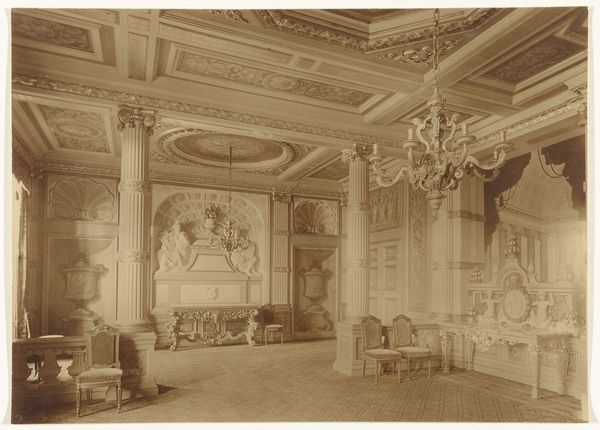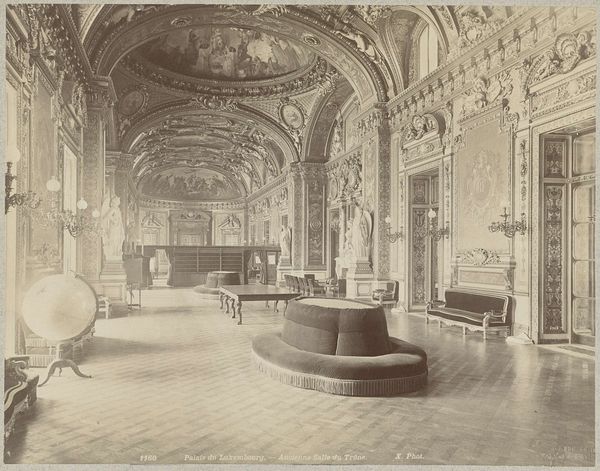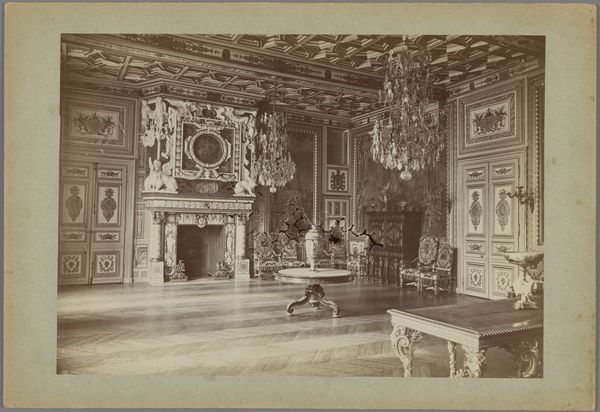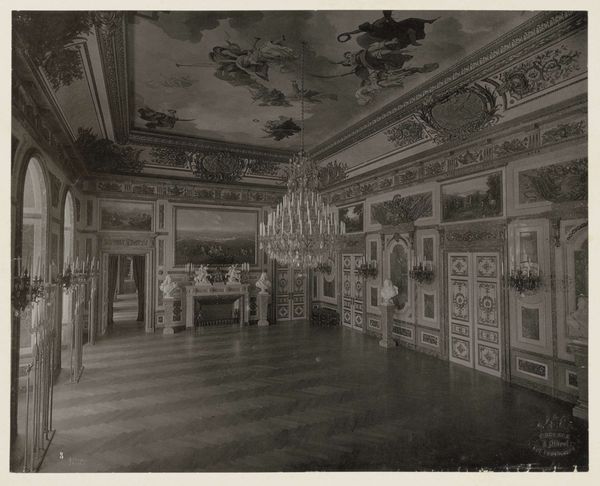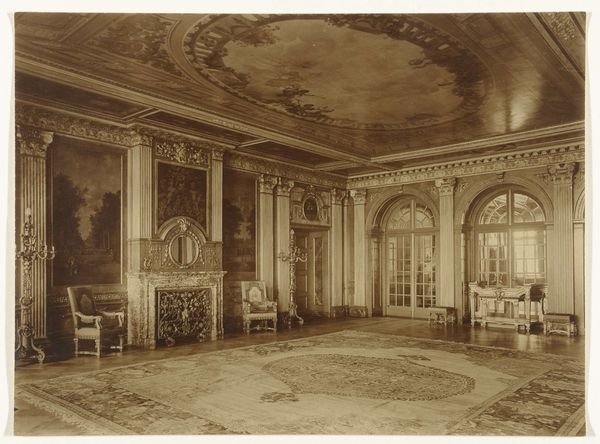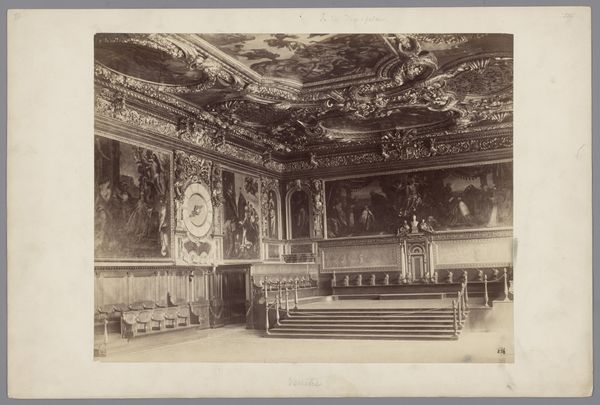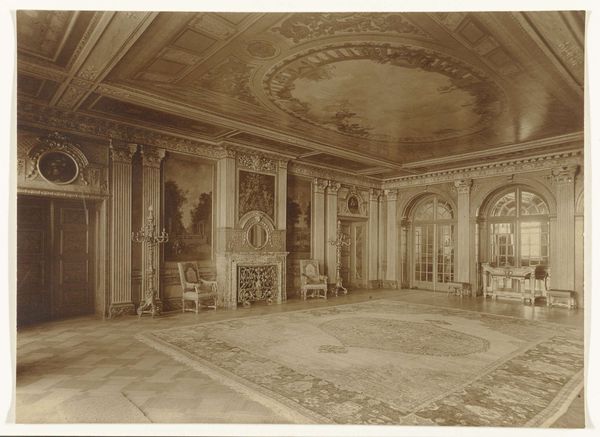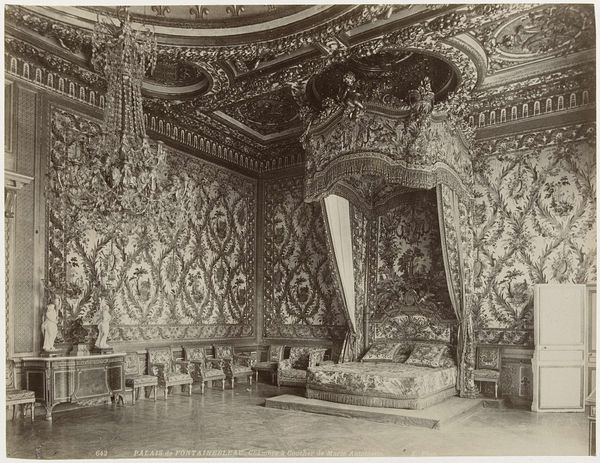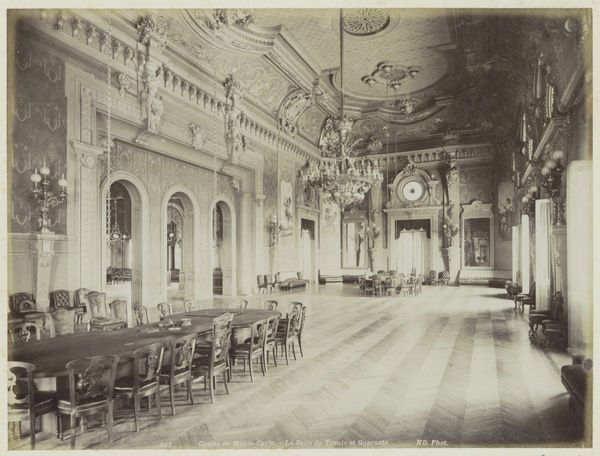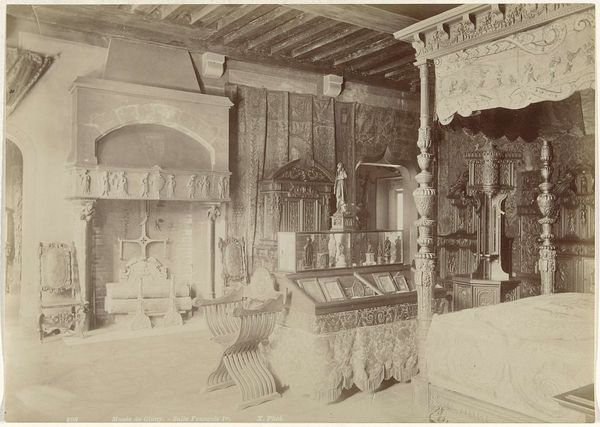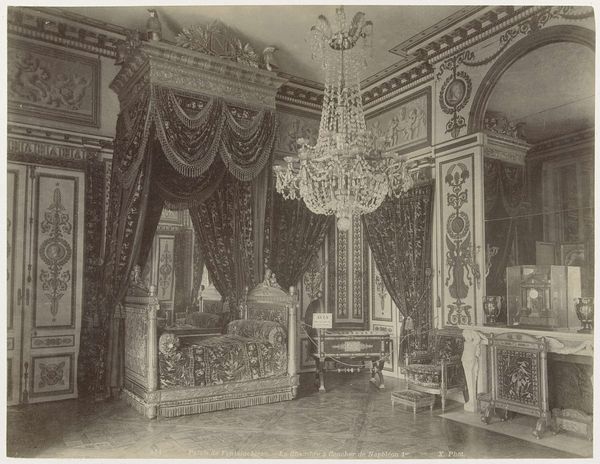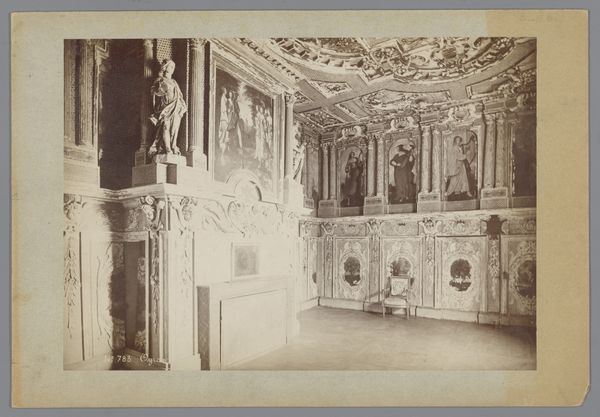
Dimensions: height 209 mm, width 278 mm, height 306 mm, width 404 mm
Copyright: Rijks Museum: Open Domain
Curator: Here we have an image entitled "Salle des Gardes in het kasteel van Fontainebleau," attributed to X. phot. and created sometime between 1887 and 1900. It’s a photographic representation of a grand interior, focusing on architecture. What is your immediate reaction? Editor: Impressive, in a chilling sort of way. It feels deserted. All that opulent detail and nobody is there to witness it, and nobody is using this space. I am feeling class differences already. Curator: The image speaks volumes through its symbols, doesn’t it? Look at the ceiling—intricate patterns, allegorical figures. This wasn't just decoration; it was a language, intended to communicate power and lineage. What figures come to your mind as being the possible ones shown in the central medallions on the fireplace. Editor: I definitely get you. You are bringing me in touch with the concept of symbolic language. The bust on the fireplace, the statues flanking it...it all projects the authority of someone, of the state itself, most probably the portrait depicts the features of royalty who owned and used this hall. This isn’t just aesthetic; it's a tool for reinforcing social hierarchies and power dynamics. It reminds us of all people working for people in these positions and the economic imbalances. Curator: Exactly! And consider the medium itself. Photography, by the late 19th century, was becoming increasingly accessible, yet this image immortalizes a space far removed from the daily life of the common person. Is it making propaganda to support powerful and rich positions in this way? What message does it convey about that space, would it convey it any other way? Editor: A loaded statement. Photography made images accessible, but who controlled the images? And to what end? Even today, think about how photographic media shapes perceptions of everything, from political leaders to unattainable beauty standards. The control, narrative, is ever-present! Is it a form of propaganda for wealth and success? And the political power! It needs to be challenged and put on context always, no matter when. Curator: It's a haunting reminder of how images construct narratives and the importance of dissecting those narratives, right? They may show an apparently peaceful depiction, or a beautiful hall. What stories do you perceive or read in this hall besides political messages. Editor: I will remain on this track because this kind of opulent image speaks of excesses that remain even to this day; for those who admire them as a proof of "fine craftsmanship" (what you would probably prefer to point at), there are always some social imbalances hidden, no matter what, since they imply different degrees of accesses to possibilities. Curator: A complex layering of symbols, perspectives, and critical reflections! A challenge of looking deeper always. Editor: An imperative one indeed; this hall could be seen as the ultimate visual reminder that our role is not just admire, but challenge and ask.
Comments
No comments
Be the first to comment and join the conversation on the ultimate creative platform.
